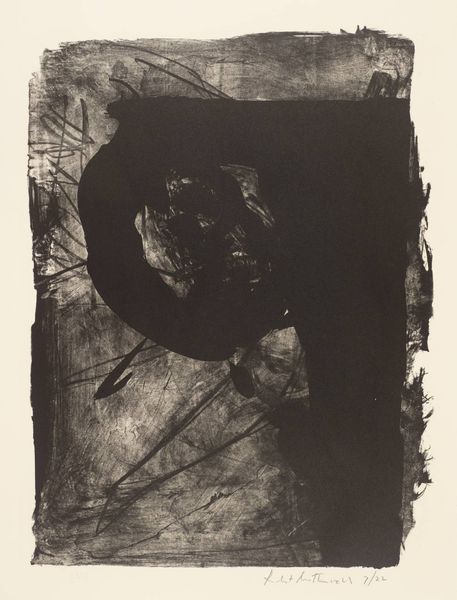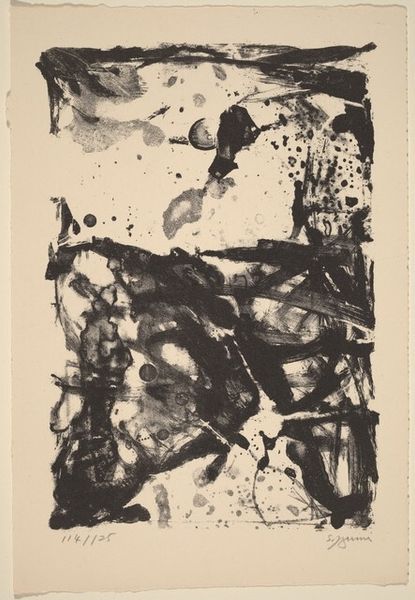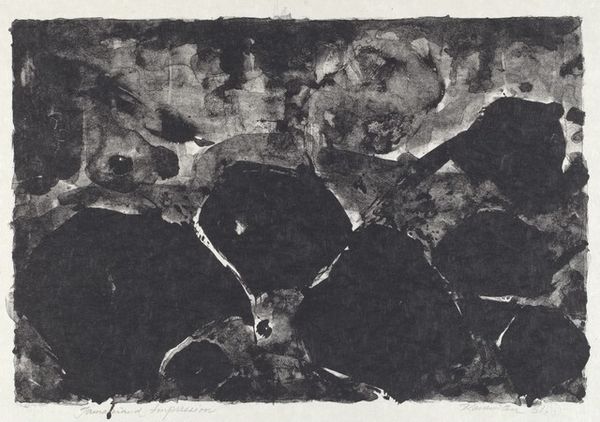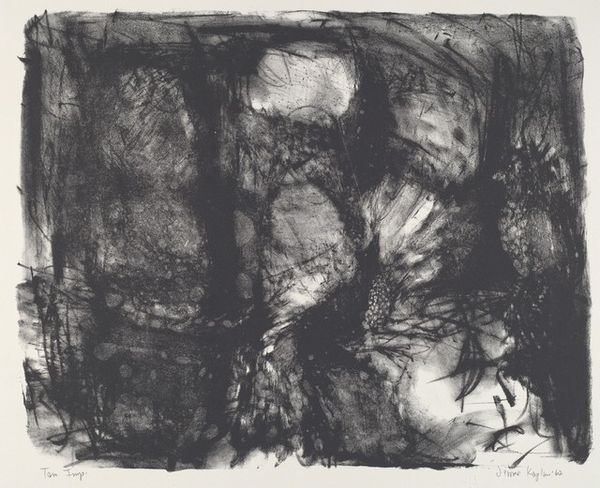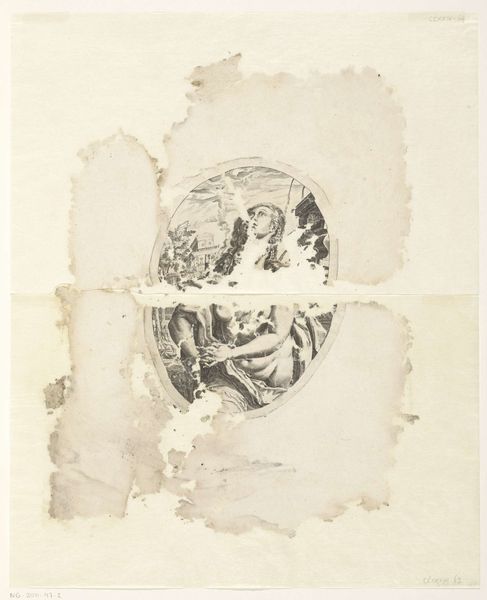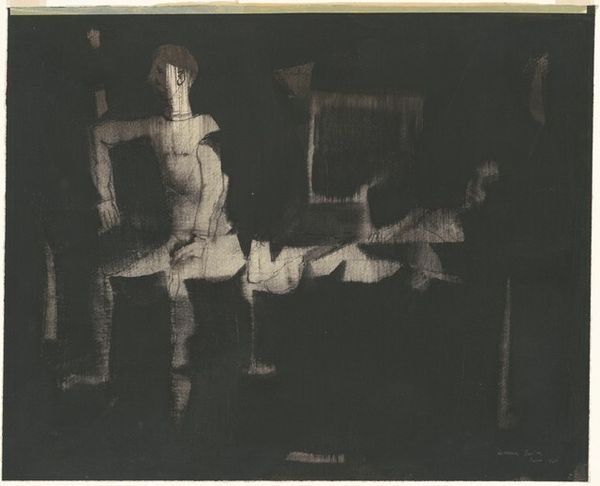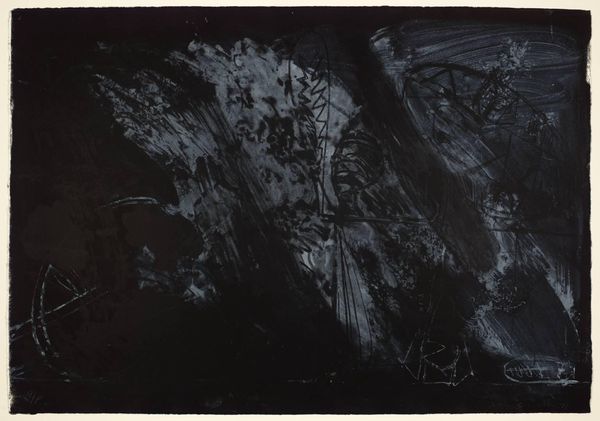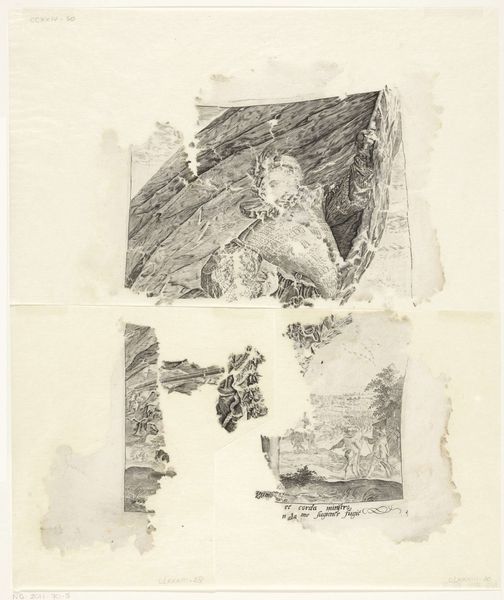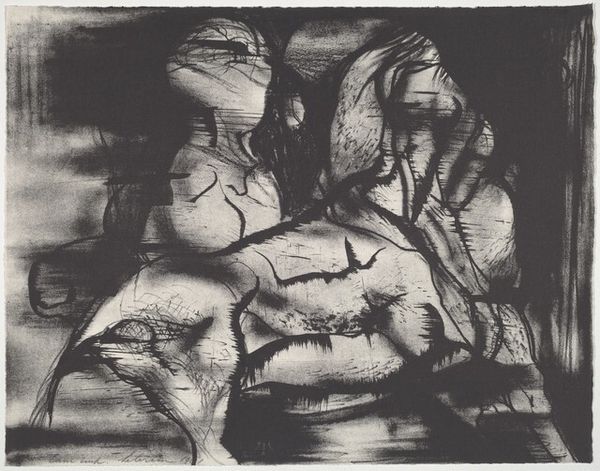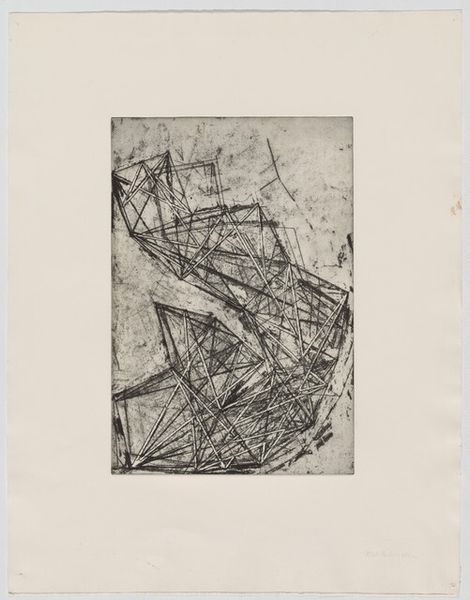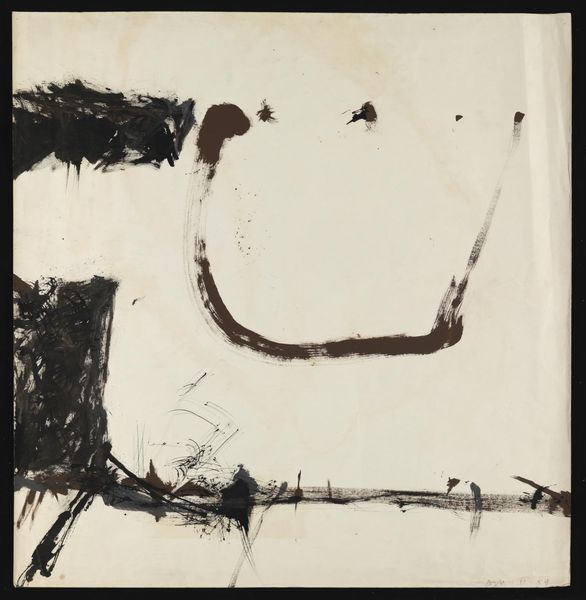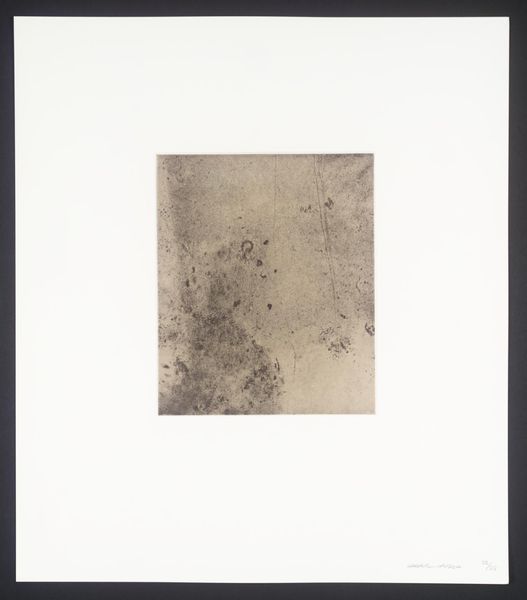![After Holbein (In Portfolio Artists against Torture) [1/2 trial proof] by Jasper Johns](/_next/image?url=https%3A%2F%2Fd2w8kbdekdi1gv.cloudfront.net%2FeyJidWNrZXQiOiAiYXJ0ZXJhLWltYWdlcy1idWNrZXQiLCAia2V5IjogImFydHdvcmtzL2FmN2I0ZjA5LTBlZmEtNDdmZi04ZWMxLWU1MTdmODdmZmM5OS9hZjdiNGYwOS0wZWZhLTQ3ZmYtOGVjMS1lNTE3Zjg3ZmZjOTlfZnVsbC5qcGciLCAiZWRpdHMiOiB7InJlc2l6ZSI6IHsid2lkdGgiOiAxOTIwLCAiaGVpZ2h0IjogMTkyMCwgImZpdCI6ICJpbnNpZGUifX19&w=1920&q=75)
After Holbein (In Portfolio Artists against Torture) [1/2 trial proof] 1993
0:00
0:00
#
neo-dada
Dimensions: sheet: 56.52 x 76.2 cm (22 1/4 x 30 in.)
Copyright: National Gallery of Art: CC0 1.0
Curator: Let’s turn our attention to Jasper Johns’ "After Holbein," a 1993 etching printed with ink on paper. What’s your initial take? Editor: Immediately, there’s this brooding, almost unsettling darkness. It feels heavy, not just tonally, but conceptually. Curator: The work is more than just visually dark. Look at the abstract quality – Johns isn't offering a clear portrait but fragments, alluding to Holbein without replicating. We can examine this as a formal study of how we perceive reproductions, mediated through the artist’s process. Editor: But it was created as part of “Artists Against Torture". The incompleteness, the obscuring shadows…they read like metaphors for the silencing and dehumanization inherent in torture. It's impossible to ignore that socio-political dimension here. How do you feel the material relates to that message? Curator: Formally, the etching is quite remarkable; note the textures created, and the play of light. The limited tonal range almost flattens the image. Johns consistently questions representation through his deliberate engagement with materiality, in both his paintings and his prints. Editor: True, the technique itself draws you in. But seeing the work in light of its purpose—its connection to Amnesty International—it strikes me that Johns isn't merely exploring abstraction. He’s visually representing trauma and calling attention to systemic injustice. It is meant to provoke our discomfort, our outrage, at torture itself. What message can this artwork provide contemporary audiences? Curator: Looking at the print's design from the present-day lens provides fresh perspectives; however, let's avoid over-determining one interpretation, since there is much at play. This close look provides an entry to discussions on art and interpretation. Editor: Ultimately, its fragmented, haunting quality lingers—an unresolved visual statement against cruelty. This encourages viewers to reflect not only on Holbein's work and John’s interpretation, but also on issues of human rights.
Comments
No comments
Be the first to comment and join the conversation on the ultimate creative platform.

